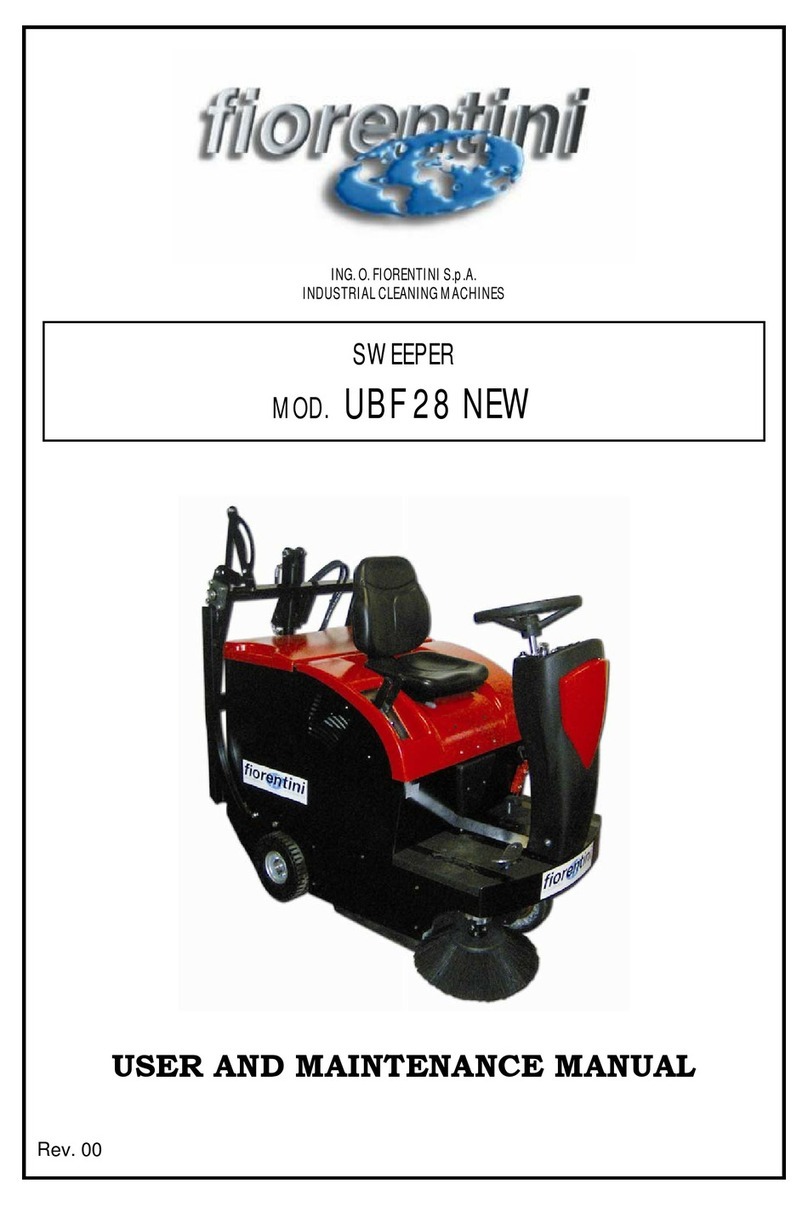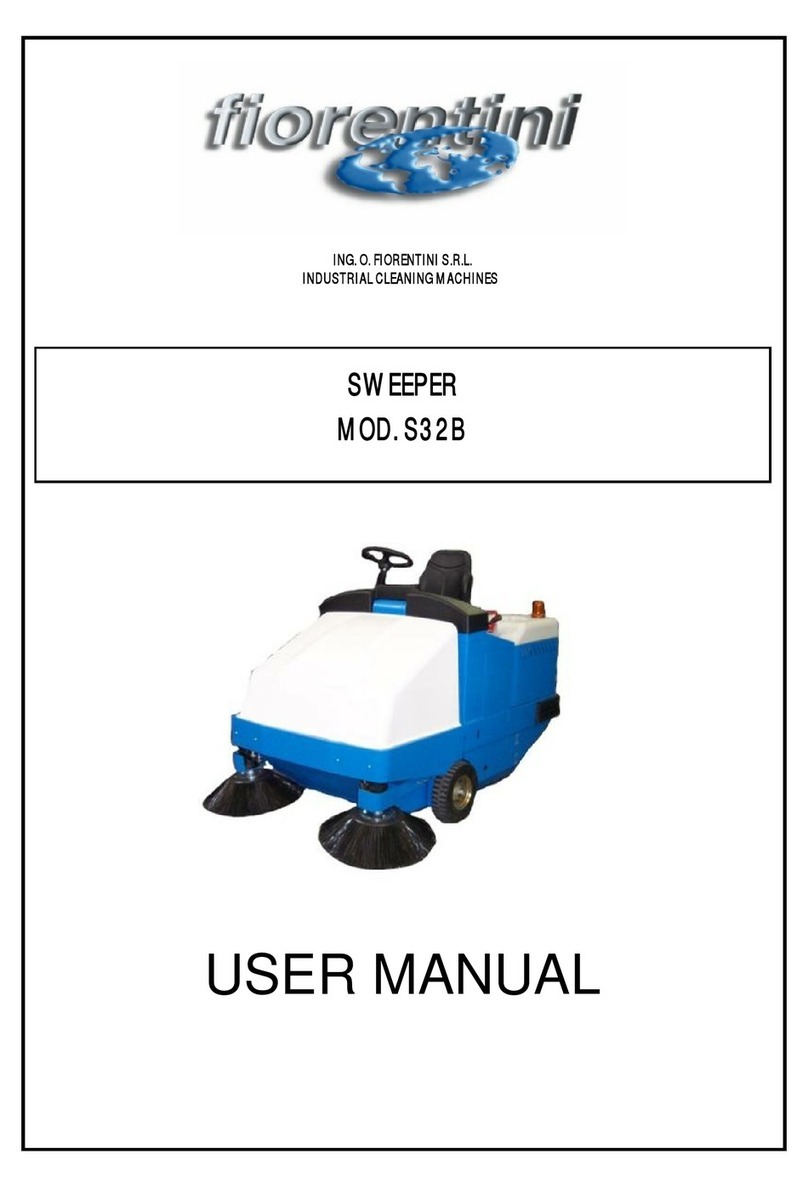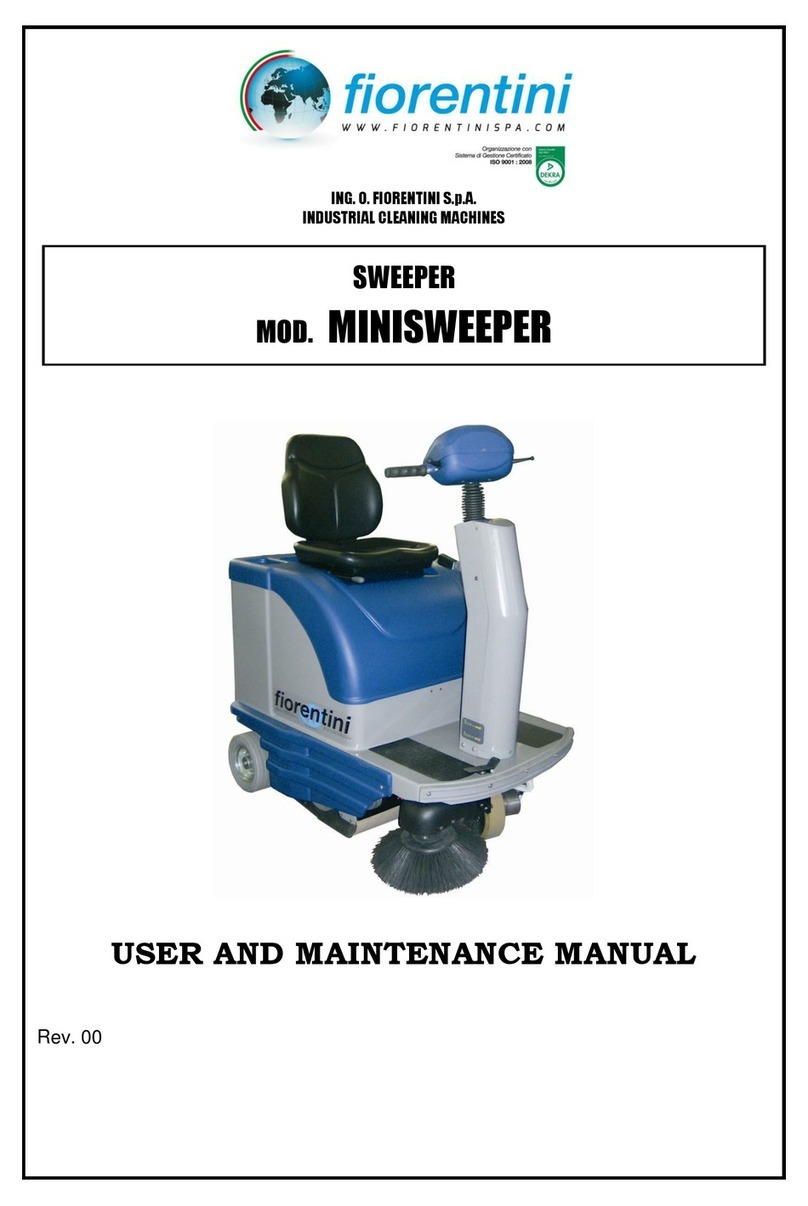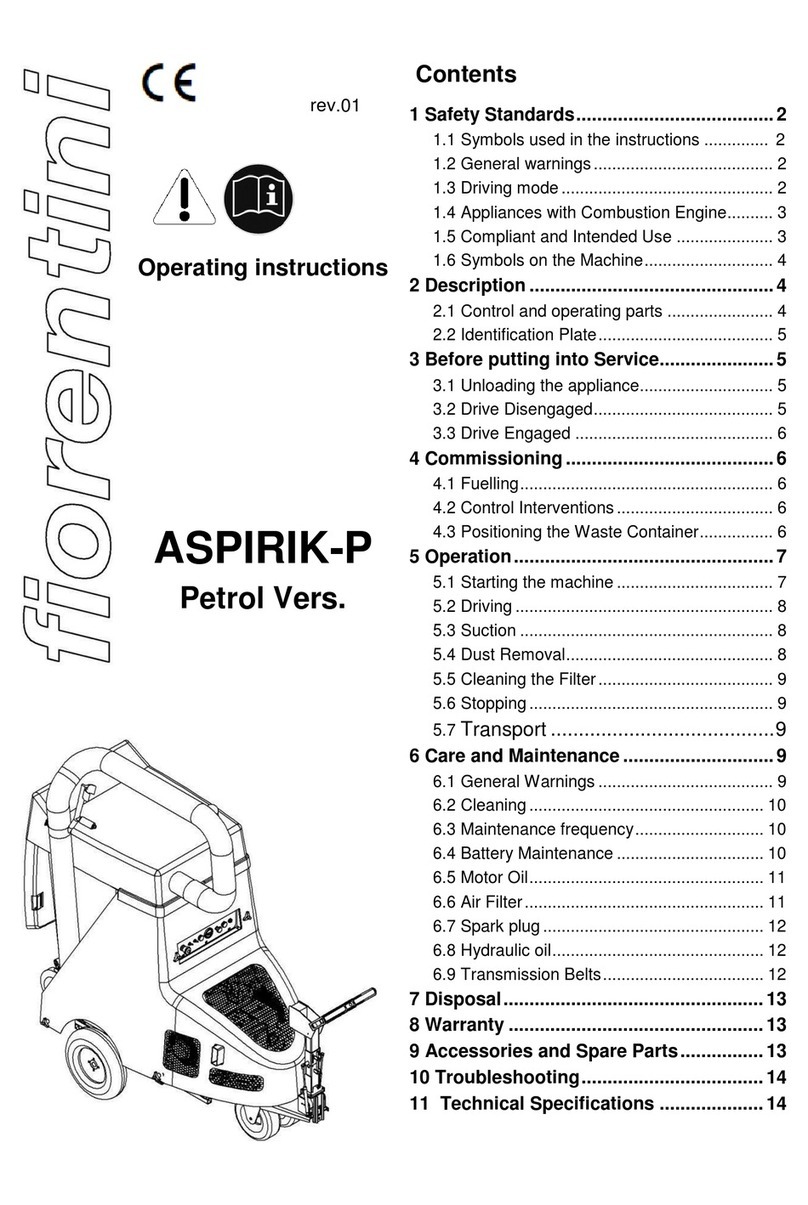in compliance with its destination, by observing the safety and prevention standards according to the
prescriptions contained in the instruction and maintenance handbook. Remove (or let remove) immedi-
ately any failures which could compromise the safety. The machine is exclusively designated to be used
as a scrubber; any other different use, i.e traction, does not comply with its destination. The manufac-
turer/supplier takes no responibility for any consequent damage. The risk is completely to be charged
to the user. The use according to the destination includes also the compliance with the use and
maintenance instructions and with the inspection and maintenance conditions as well.
CAUTION: DANGER
It is absolutely forbidden to suck inflammable and/or toxic liquids and powders.
CAUTION: DANGER
It is dangerous and absolutely forbidden to touch the lower part of the machine with the hands when
some parts are moving. Should it be absolutely necessary, remove the key from the dashboard.
CAUTION
Caution: on this machine with operator on-board, the rotating headlight should constantly operate and
must be switched on when turning the key switch. The switch on the dashboard must be set to “0"
position only in particular situations and, in any case, with stillstand machine.
INSTRUCTIONS FOR USE
The machine can be used only by an authorized operator. To prevent the machine from being used by
unauthorized personnel, it is necessary to block the operation by extracting the ignition key. When the
machine is not working, it should be protected from any accidental movements by pressing the
emergency pushbutton or detaching the plug from the battery. While the machine is working, pay
attention to strangers and in particular to children. Always keep handy the instruction and maintenance
handbook on the working place of the machine. Beyond the use and maintenance instructions, observe
and prepare the binding general legislative rule regarding the accident prevention and environment
protection as well. This canalso concern the handling of harmfulmaterials, the availability and mounting
of customized protection equipments and the compliance with the rules of the road as well. In case of
modifications detected on the machine, which can compromise its safety or its operation, stop the
machine immediately and inform the responsible body or person. Do not make any changes or variations
on the machine which can compromise its safety, without previous authorization by the supplier. Never
perform any unsafe operations. Before starting the work, become familiar with the environment of the
working place. The working environment includes, for instance, any possible obstacle present in the
working and transition place, the knowledge of the ground capacity in a public traffic area, etc. Comply
with the prescriptions contained in the instruction and maintenance handbook, as regards to on and off
operations. Before switching the machine on and starting it, check that the operation does not endanger
anyone. The transport of people and things is not allowed.
CAUTION
Keep in mind the following standards; failure to adhere to these rules can endanger the life of the
operator or of other people. Always keep a sufficient distance from the sidewalk edges and from large
differences in height of the floor where the machine can fall; never adopt a work tecnique that can
compromise the stability of the machine. Never pass through slopes in trasversal direction; when going
through a downhill road, always adjust the speed to the environment conditions. Do not turn the machine
at excessive speeds, particularly if the floor is not flat.
CAUTION: DANGER
Never operate the machine when stopped for special operations (setting up, maintenance, etc.). Before
starting the work, check for any possible visible defects on the safety devices, and the correct operation
of the emergency stop pushbutton or of the equivalent mechanism . Never operate the machine when
the control panel indicates defective tools, warning lights, etc.
MAKE SURE THAT:
- No strangers are present near the machine
- No strange objects (appliances, cloths, etc.) are on the machine
- The machine does not emit strange noises after its starting; if so, stop it immediately and detect the
cause.
All doors and protections are regularly closed.
Never let approach strangers near the machine. Use, maintenance and repair of the machine are allowed
only to operators authorized by the person responsible of the machine, who knows the manual contents.
7














































